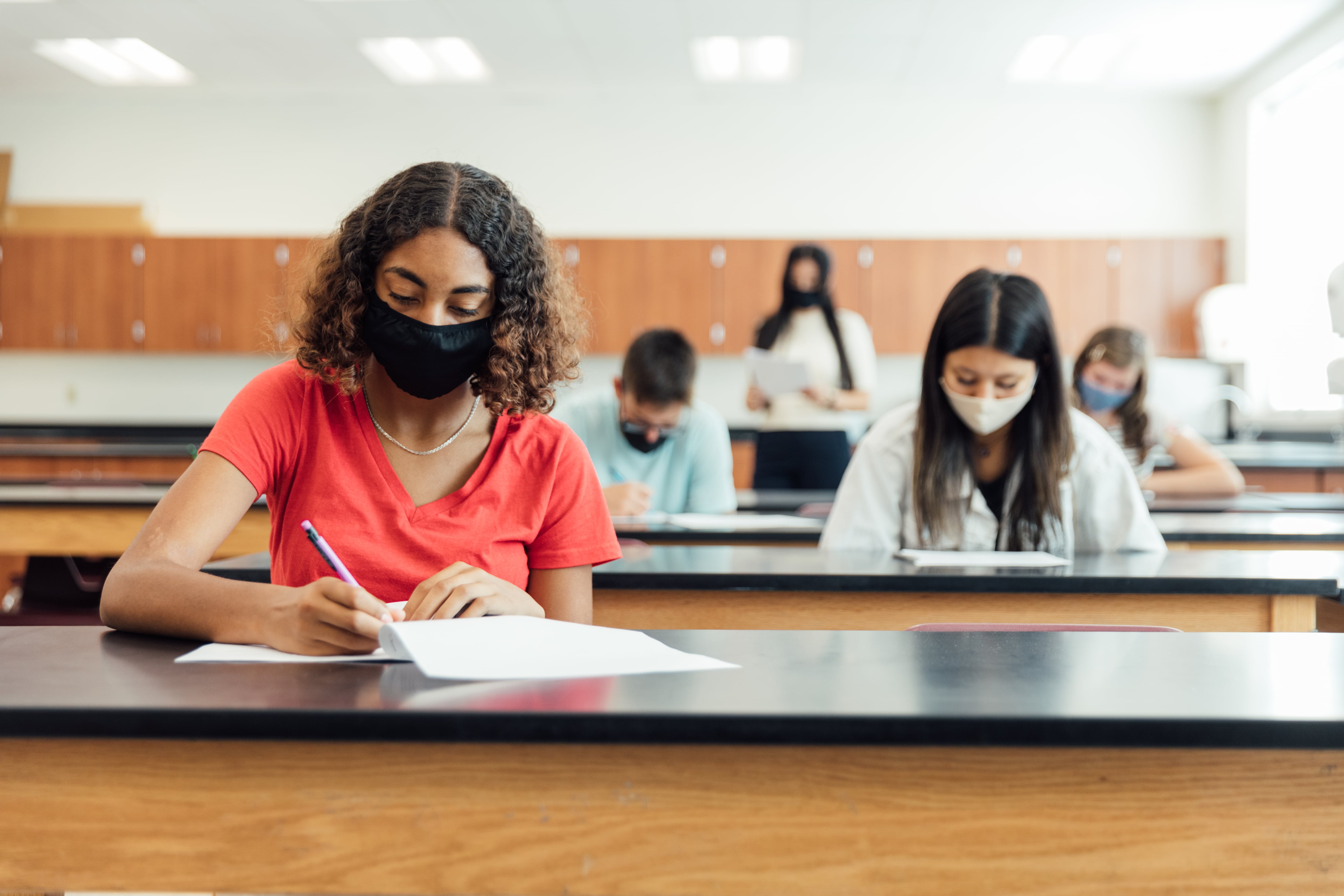Illinois school leaders face a dilemma: should they move ahead with spring standardized testing to capture much-needed data on learning loss? Or should they waive tests again in recognition of ongoing disruption from COVID-19?
School district leaders, advocates and members of the Illinois State Board of Education debated Thursday whether or not Illinois should move forward with assessing students in the spring. This was the second time during this school year that the state school board discussed this topic publicly.
In September, the board agreed to hold off further discussion on 2021 assessments until November, in case a new presidential administration would weigh in.
President-elect Joe Biden has not said yet whom he will name for U.S. education secretary, but that appointee will ultimately decide whether to give states another pass on federally required standardized testing this year. Nationally, the education establishment is divided on the issue but appears to agree that if many school buildings remain closed because of COVID-19, remote testing would be hard to pull off.
Education advocates have said that statewide assessments could help show what resources school districts need to help students catch up after the disruption to their education. However, the advocates insisted that the board should not use test results to punish school districts and schools.
Theodia Gillespie, president of the Quad County Urban League, told the board during public comment that data from the assessment will help schools identify and work to close opportunity gaps. In Illinois, less than 40% of elementary school students meet state standards in reading and math.
“The assessment this year will allow us to track student progress during this less-than-normal year. It will allow us to create a plan as we move into 2021 and most importantly, allow us to put a remediation process in place to ensure there are no long-term irreversible impacts from this period.” she said.
Meghan Whittaker, director of policy and advocacy at the National Center for Learning Disabilities, argued that assessments are critical for children with disabilities, and another year of waiving them would leave those students further behind.
“Students with disabilities are already grade levels behind their peers,” she said. “These assessments are a key ingredient as we work to help make sure all kids are making progress during this time.”
For some district leaders, the question comes down to how to test students in a way that is safe and equitable. With COVID-19 cases on the rise, school districts are struggling to find a reopening plan that works for their school’s community and sometimes have to shut schools quickly.
When asking the board to reconsider skipping assessments, Michelle Smith, superintendent of Berwyn North School District 98, argued that the data will show that students who were already struggling before the pandemic are struggling more now.
“Once we get data, it’s going to show the last thing for years: schools with higher levels of low-income students will perform lower than schools with more affluent students,” Smith said. “Any data that we receive will only speak to what we already know.”
Cristina Pacione-Zayas, a state school board member, said that testing is limited in what it can tell about a student’s progress, or lack thereof.
“There is a utility issue with data, there is going to be a data quality issue. There are logistical conundrums to consider,” said Pacione-Zayas, who also serves as associate vice president of policy at the Erikson Institute, a graduate school for early childhood educators.
Donna Leak, another state school board member, warned that the state may not be able to apply for a federal testing waiver in the spring. She hopes that the board can find an innovative way to assess students during the pandemic.
The board did not make a final decision.
The state reports that almost 44% of school districts had a hybrid learning plan, 29% of districts were providing in-person instruction to students, and 27% of school districts — including many of the state’s largest — were teaching remotely. These numbers were last updated on Nov. 19 with 848 out of 852 school districts reporting.








